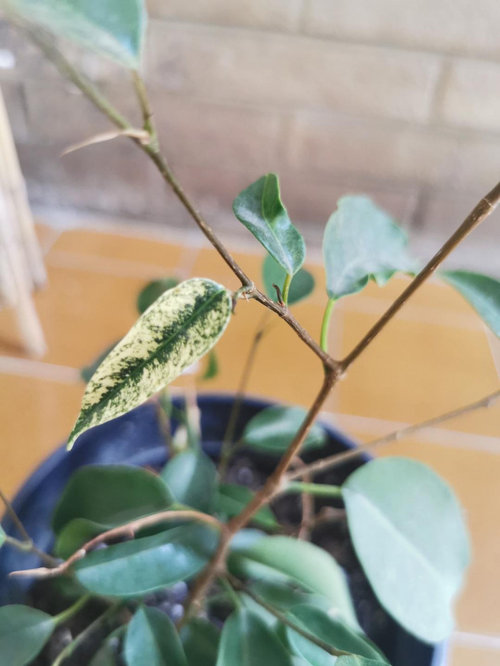Ficus benjamin and white leaves: iron chlorosis?
Michele Rossi
10 months ago
Related Stories

KITCHEN DESIGNHow to Keep Your White Kitchen White
Sure, white kitchens are beautiful — when they’re sparkling clean. Here’s how to keep them that way
Full Story
MOST POPULARMust-Try Color Combo: White With Warm Off-White
Avoid going too traditional and too clean by introducing an off-white palette that brings a touch of warmth and elegance
Full Story
HOUSEPLANTSHow to Grow a Happy Ficus
This houseplant’s reputation for being fussy shouldn’t prevent you from growing and enjoying it for years
Full Story
BEDROOMS11 Reasons to Love White Bedding
For easy bedding that makes neutrals sing and accessories pop, look to the white side
Full Story
LIVING ROOMSNew This Week: How to Punch Up a Modern White Living Room
Consider these easy combinations to bring personality, color and texture to your neutral backdrop
Full Story
GARDENING GUIDESWhat's Wrong With My Plant? Leaves Often Hold the Clues
Learn how to identify common plant ailments by reading their leaves
Full Story
WHITEDesigner Secrets: 10 Pros Share Favorite Off-White Paints
From creamy white to barely beige, these hues will warm up your room
Full Story
KITCHEN DESIGNDream Spaces: 12 Beautiful White Kitchens
Snowy cabinets and walls speak to a certain elegance, while marble counters whisper of luxury
Full Story
WHITE KITCHENS4 Dreamy White-and-Wood Kitchens to Learn From
White too bright in your kitchen? Introduce wood beams, countertops, furniture and more
Full Story
TRIMTrim Color Tips: Get Your White Trim Right
Set off wood tones, highlight architectural features, go minimalist ... white trim is anything but standard when you know how to use it
Full StoryMore Discussions
















tapla (mid-Michigan, USDA z5b-6a)
Michele RossiOriginal Author
Related Professionals
Kapaa Landscape Architects & Landscape Designers · Edmond Landscape Contractors · Fort Payne Landscape Contractors · New Brighton Landscape Contractors · Saint John Landscape Contractors · Sammamish Landscape Contractors · Compton Solar Energy Systems · Dover Solar Energy Systems · Glendale Heights Window Contractors · Opa Locka Window Contractors · South Laurel Window Contractors · Discovery Bay Window Contractors · Holbrook Fence Contractors · Lexington Fence Contractors · Palmetto Fence Contractorstapla (mid-Michigan, USDA z5b-6a)
Michele RossiOriginal Author
tapla (mid-Michigan, USDA z5b-6a)
Michele RossiOriginal Author
tapla (mid-Michigan, USDA z5b-6a)
Michele RossiOriginal Author
tapla (mid-Michigan, USDA z5b-6a)
Michele RossiOriginal Author